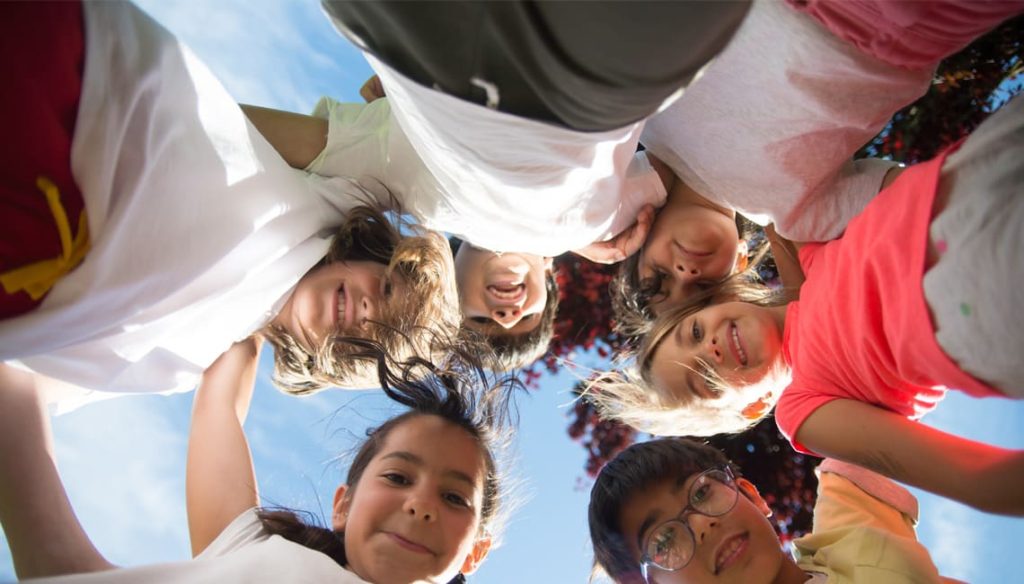
We must focus all our attention on the child,
Maria Montessori
because he is the origin of the enigmas of humanity
and also the key to solve them.
Years ago people said a phrase “no one teaches you to be a mother or father” and did what they could. Over time, pedagogical theories began to spread, different models of education, consultancies of all kinds, and medical science advanced so much that childhood became stronger. In our days those who decide to undertake motherhood or fatherhood have various tools to avoid improvising and provide their offspring with an accurate and promising future.
It was for this reason that since the beginning of the 20th century, great concern was generated for children who were vulnerable due to the constant wars that caused orphanhood, the increase in refugee children, and the health consequences that this entailed. The activist Eglantyne Jebb found a way to help through the Save the Children association see https://www.savethechildren.net and together with the International Committee of the Red Cross, they were able to proclaim in 1924 during the Geneva Convention the Declaration of the Rights of Children. These initiatives are still valid to this day due to the permanent efforts that focus on children.
Through the UN, the International Children’s Day has been established on November 20 and from there each country promotes a particular day to intensify the recognition of children’s rights that focus on fundamental aspects such as security, decent housing, food, and health that must be guaranteed to all children and adolescents throughout the world. To learn more about this code visit: https://www.un.org/es/events/childrenday/pdf/derechos.pdf
In Mexico, April 30 was designated as Children’s Day during the presidency of Álvaro Obregón and education minister José Vasconcelos. In 1924, he invited the teacher and writer Gabriela Mistral to collaborate in the educational reforms of his country. During that period, Mistral articulated an ideology for the development and comprehensive well-being of children. He gave foundations to his pedagogical reflection regarding the methods and purposes of teaching. The priority was to achieve better nutrition, better education in reading, writing, and quality of educational materials, and to open libraries to complement these objectives.
José Vasconcelos and Gabriela Mistral opened the schools in the open air because, with the Chilean writer’s experience as a rural teacher and the minister’s purposes of improving the quality of life of the children of the native peoples, the so-called Cultural Missions were created to carry books and schools to every corner of the country. It was an epic and unique educational policy in the history of Mexico.
The subject of education is always important, although there are more and more resources and options, in many cases, it focuses on the future of the students and not on the present. According to the therapist Claudio Naranjo, current education focuses on competing, achieving success, and pays less attention to mental health, the development of the spontaneity of the human body, play, empathy, love, and is not very sensitive to childhood concerns.
It seems that current education is trying to tame people instead of encouraging them to personal growth. The educational model that Maria Montessori promoted almost two centuries ago focuses on the development of practical life where people are able to fend for themselves and develop their individual skills according to their personal and individual processes in the context of social collaboration.
The times we are facing today sadly continue to harm children, considered between 0 and 18 years old, in most countries since wars have caused the exile of millions of families and increasing support for children is necessary. and refugee girls in various parts of the world. Children in situations of violence due to bullying or bullying, rejection of children of sexual diversity, accidents, addictions, and suicide also increase mortality rates.
Much progress has been made in medical research to reduce infant mortality in newborns up to one year of age which is measured by the number of deaths per thousand live births. In the United States, there are several causes that lead to the end of a baby’s life, including infections, respiratory diseases, diarrhea, pregnancy complications, birth defects, and Sudden Infant Death Syndrome (SIDS). in English and the syndrome of respiratory distress RDS for its acronym in English and accidents.
We must know the factors that contribute to more likely death in babies, such as lack of access to medicines, unqualified health providers, lack of clean water, and low-quality food; they can affect the entire population but have a dramatic effect on childhood. It is important to be alert to prevent and avoid these risk factors.
The right to health of children is inalienable and although the Covid-19 pandemic did not reduce the child population, like that of adults, boys and girls have faced death and experienced the funerals of loved ones, violence inside their homes that in many cases have left them defenseless. It is said that the early closure of schools around the world could help protect children from contagion, however, if there was a child population affected by school confinement and it is that belonging to minorities or in a situation of poverty that does not they were able to access school lunches or after-school help to further their education.
The work that parents, educators, and doctors have to give children the well-being rights they deserve is immense. Fortunately, information resources grow exponentially along with the challenges. We do not know what those children will be in the future, but we do know what they require today: unconditional love and our total effort to guarantee their rights. Foresight is of great help to provide them with a future of peace and tranquility, so we remind you that at Del Pueblo Funeral Home, we make the most difficult moments easy.
